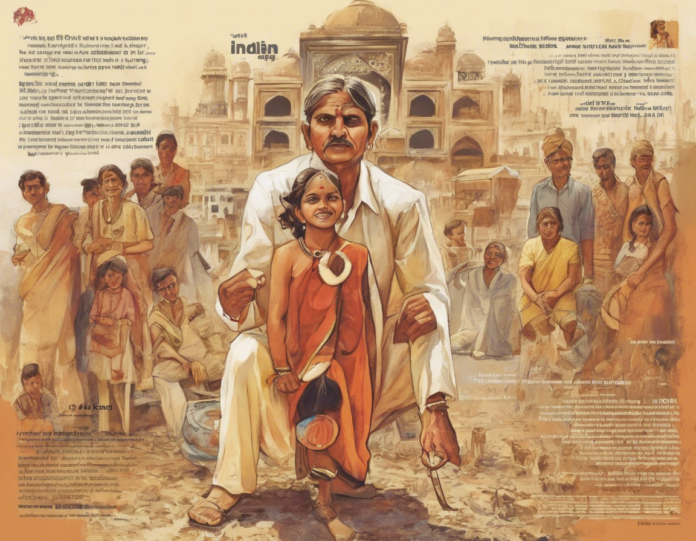India is a land of diverse cultures, traditions, languages, and practices that have been evolving for thousands of years. The country’s cultural tapestry is as intricate as it is magnificent, weaving together a myriad of influences from its long history of invasions, trade relations, and internal migrations. From the snow-capped Himalayas in the north to the sun-kissed beaches of the south, India offers a mesmerizing array of experiences for those keen on exploring its rich cultural heritage.
The Cultural Mosaic of India
Languages and Literature
One of the most striking features of India is its linguistic diversity. With 22 officially recognized languages and over 1,600 dialects, India is a melting pot of linguistic expression. Each state in India has its own official language, while Hindi serves as the national language. Apart from languages, India boasts a rich literary tradition dating back to ancient times. Sanskrit, the classical language of India, has been the foundation of many literary works, philosophical treaties, and scientific texts.
Art and Architecture
Indian art and architecture are steeped in history and symbolism. From the intricately carved temples of Khajuraho to the breathtaking Taj Mahal in Agra, India’s architectural marvels reflect the cultural and religious diversity of the country. Indian art encompasses a wide range of forms, including classical dance forms like Bharatanatyam and Kathak, traditional paintings like Madhubani and Warli, and craftsmanship in textiles, pottery, and jewelry making.
Festivals and Celebrations
India is known for its vibrant and colorful festivals that are celebrated with great fervor and enthusiasm. Whether it’s the Diwali festival of lights, the Holi festival of colors, or the Navratri festival dedicated to Goddess Durga, each celebration has its unique customs, rituals, and significance. These festivals not only bring communities together but also showcase the rich cultural heritage of the country.
Cuisine and Culinary Traditions
Indian cuisine is as diverse as its culture, with each region boasting its own unique flavors and cooking techniques. From the spicy curries of the south to the tandoori delicacies of the north, Indian food is a gastronomic delight for food enthusiasts. Spices play an essential role in Indian cooking, infusing dishes with aroma and flavor. Traditional cooking methods like tandoor baking and slow cooking are still prevalent in many Indian households.
Traditional Clothing and Attire
The clothing and attire of Indians vary greatly depending on the region, climate, and cultural practices. Traditional clothing for men includes kurta-pajama, dhoti-kurta, and sherwani, while women can be seen wearing sarees, salwar kameez, and lehengas. The vibrant colors, intricate embroidery, and ornate accessories add to the beauty and charm of Indian attire.
Preserving India’s Cultural Heritage
With rapid urbanization and globalization, there is a growing concern about preserving India’s rich cultural heritage for future generations. Several initiatives and organizations are working tirelessly to safeguard and promote India’s diverse cultural traditions. The Indian National Trust for Art and Cultural Heritage (INTACH) is one such organization that focuses on heritage conservation, urban renewal, and sustainable development.
Heritage sites like Hampi, Ellora caves, and Fatehpur Sikri have been designated as UNESCO World Heritage Sites, highlighting their architectural significance and historical importance. These sites attract tourists and scholars from around the world, contributing to the preservation and promotion of India’s cultural heritage.
FAQs about India’s Cultural Tapestry
1. What is the significance of festivals in Indian culture?
Festivals in India hold great cultural and religious significance as they bring communities together, mark auspicious occasions, and celebrate traditions passed down through generations.
2. How does Indian cuisine vary from region to region?
Indian cuisine varies significantly from region to region due to differences in climate, topography, and local ingredients. Each region has its unique culinary traditions and specialties.
3. What are some famous Indian dance forms?
Some famous Indian dance forms include Bharatanatyam, Kathak, Odissi, Kuchipudi, and Manipuri, each with its distinctive style, repertoire, and significance.
4. How does traditional Indian attire reflect the country’s cultural diversity?
Traditional Indian attire is a reflection of the country’s diverse cultural heritage, with different regions showcasing their unique fabrics, designs, and clothing styles.
5. How can tourists contribute to the preservation of India’s cultural heritage?
Tourists can contribute to the preservation of India’s cultural heritage by respecting local customs and traditions, supporting local artisans and craftsmen, and visiting heritage sites responsibly.
India’s cultural tapestry is a testament to the country’s rich and diverse heritage, spanning centuries of tradition, artistry, and spirituality. By celebrating and preserving this cultural mosaic, India continues to inspire and captivate people from around the world, inviting them to delve into its enchanting depths and embrace its timeless beauty.

